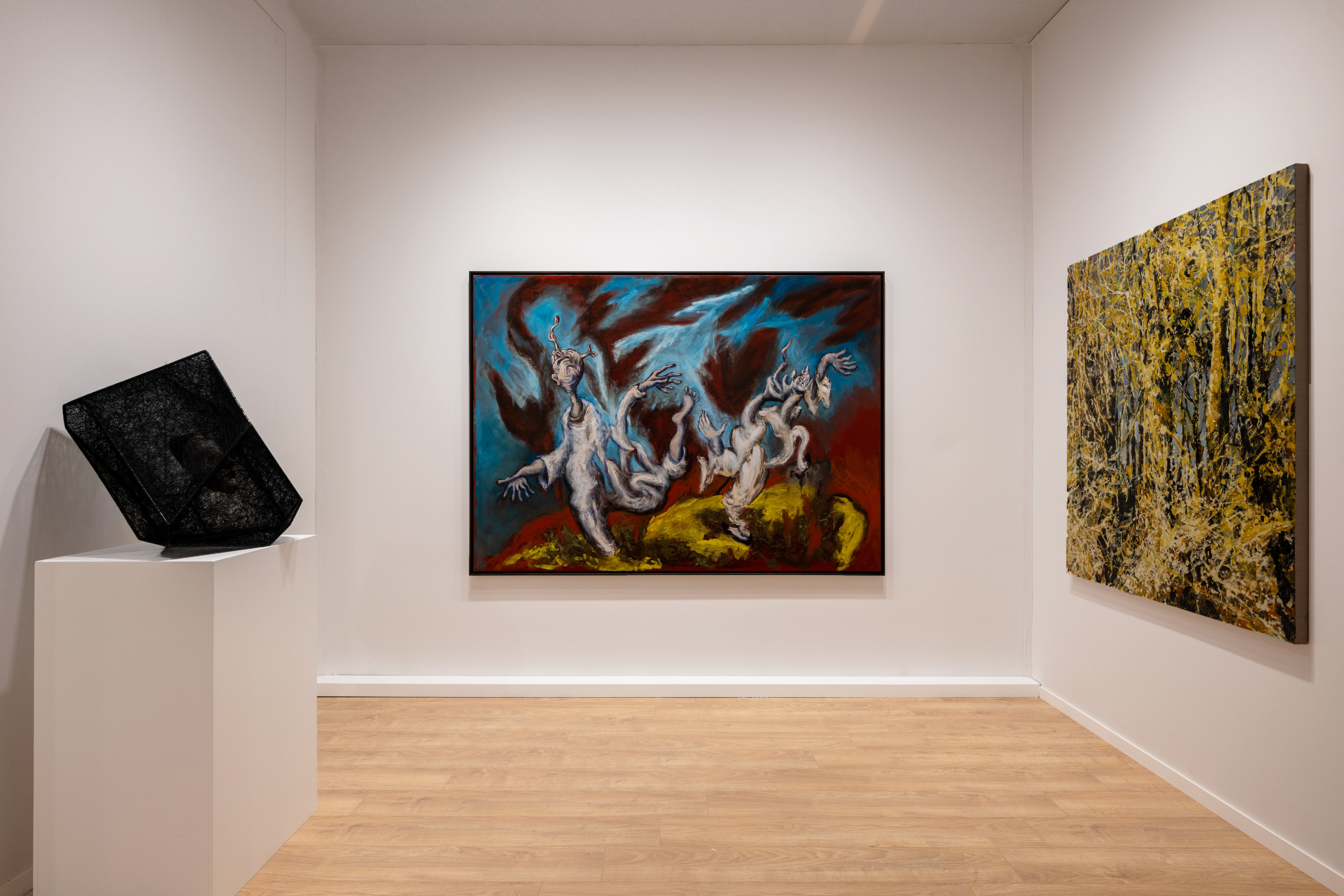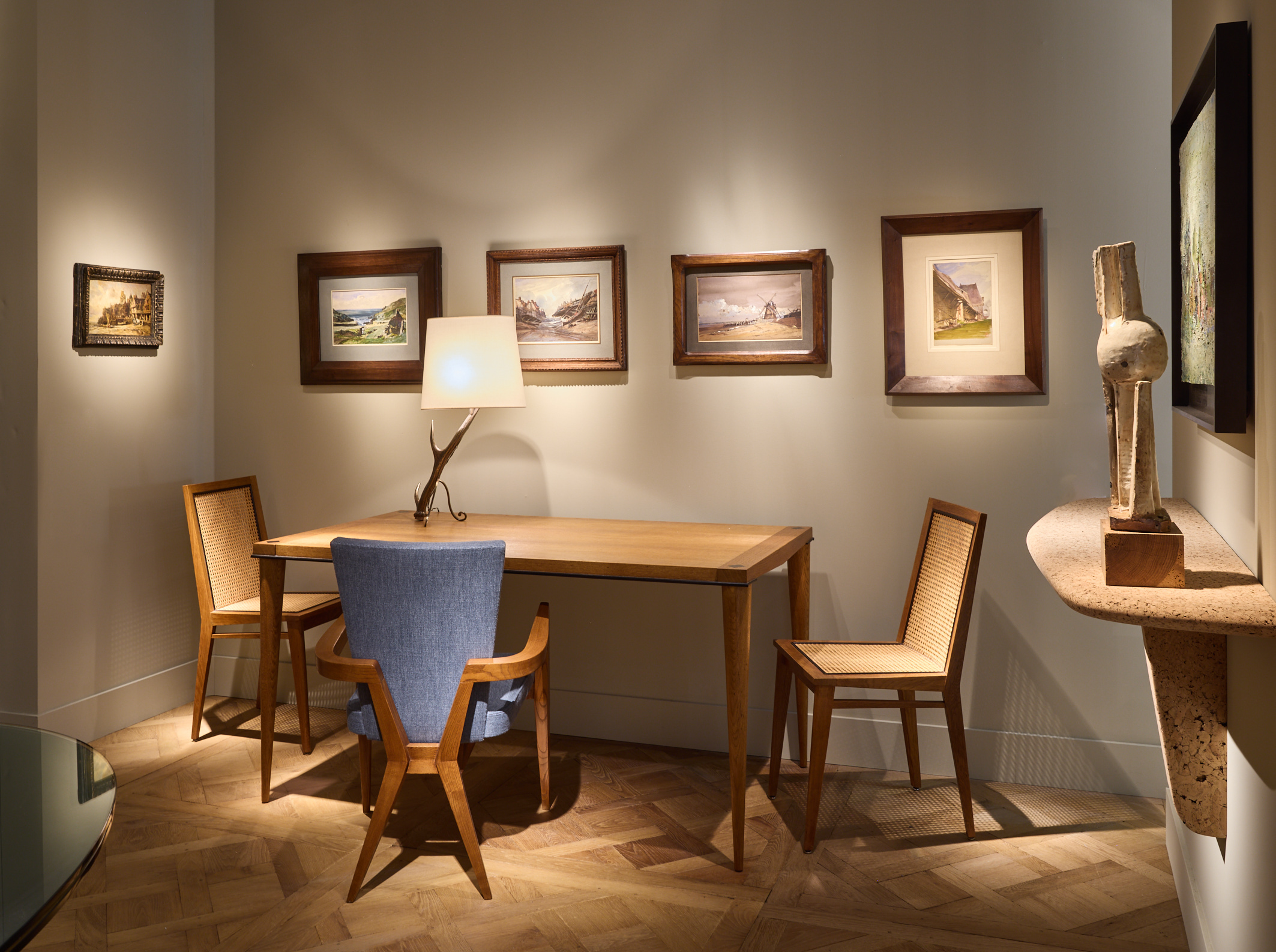TEFAF opens its new edition with a trend-defying art and antique fair
TEFAF (The European Fine Art Fair) has returned to its original location in Maastricht with a welcoming display of ornate designs for collectors, dealers and art world regulars

Robust bunches of Ten Kate-designed flowers lushly suspended from the ceiling, oysters brimming with savory aphrodisiac in each shuck, dramatic gazes of Renaissance martyrs ogling at collectors from hundreds of years-old canvases… Many ornate signs hinted at the return of art, design and antiques fair TEFAF (The European Fine Art Fair) to its birth city Maastricht this week.
The sun-washed early March breeze welcomed collectors, dealers, and art world regulars to the northern Dutch city for a week-long marathon of aisle-stomping. Big hats, flamboyant tweeds, and 270 international galleries from twenty-two nations were the VIP days’ main draw (on 7 March 2024, with the fair continuing until 14 March).
Discover TEFAF 2024

Demisch Danant TEFAF 2024
Maastricht Exhibition & Conference Centre (MECC) has been home to the mega fair since its inception in 1988, and since, TEFAF has become a collectors’ annual destination to plunge into past treasures that date as far back as 7,000 years with the chance to stumble upon a Radical era Milanese furniture or a contemporary painting. A striking embodiment of this trans historical sweep in the fair experience is the inaugural Focus section, which lets dealers to weave revelatory ties between presumably disparate artists or eras.
New York’s Sean Kelly gallery, for example, marries the paintings of their roster artist Callum Innes with British antique dealer Charles Ede’s selections of various 400-500BC era Greek vessels. Elevating the bulbous terracotta urns adorned with muscular male torsos and elegant goddesses are carved wood or white onyx pedestals created by Mexican designer Gloria Cortina—backing the multi-textural juxtaposition is a purple-heavy gently drawn watercolour by Innes, titled Red Violet / Red Orange (2022).

Templon 464 Loraine Bodewes
'There are many studious presentations in this section,' says Hidde van Seggelen, the president of TEFAF executive committee. Standing at his own eponymous gallery’s booth make his case clear: a set of photographs by Brassaï from the 1950s capture Parisian graffiti in black and white across from a suite of wood and wax abstract tower-esque sculptures by British contemporary artist Andy Holden who is currently the subject of a solo exhibition at Tate St. Ives.
Another standout is Parisian gallery Ketabi Bourdet’s presentation of Paulo Pallucco’s '100 Chairs in One Night' seats, with a few Philippe Starck pieces. The black-colored wooden chairs, which Pallucco designed in 1990s with minimalist but energetic silhouettes, are each inspired by a Rainer Maria Rilke verse and they alchemize a subdued aesthetic with joyful accents, such as wavy or completely stretched backs.

Work from artists and Templon
A frosty glass vase by Starck from the same era sits on a 1987-dated black lacquered steel table in which Pallucco partnered with his regular collaborator Mireille Rivier. Also Parisian, Templon gallery salutes art history with a life-size bronze Jim Dine sculpture of Three Graces, titled Primary Ladies (2008) and a Kehinde Wiley hand-painted stained glass light-box painting of two contemporary Black figures in the fashion of Mary and baby Jesus, titled The Virgin and Child Enthroned (2016).
Wallpaper* Newsletter
Receive our daily digest of inspiration, escapism and design stories from around the world direct to your inbox.
The gallery’s most playful homage to the pillar of western art however is Belgian artist Hans Op De Beeck’s twist on vanitas in the genre’s birthplace. Aptly titled Vanitas (Variation) 15 (2017), the plaster, wood, steel, and polyester shelf sculpture is a bounty of contemporary objects, such as an early generation smart phone, cigarette lighter, and high heels, alongside more typical still life icons of mortality such as fruits and candle holders, all dipped in the coldness of the artist’s choice of a steel grey hue.

Demisch Danant TEFAF 2024
Eras also mingle in Demisch Denant’s booth in an orchestration that echoes the living space of a design lover with a broadly eclectic taste: an anonymous mid-15th century wooden coffer sits not far from a 1835-dated Eugène Isabey seascape, Bataille Navale en Bord de Mer, and Noé Duchaufour-Lawrance’s Burnt Cork Console II, an untreated agglomerated Portuguese cork furniture only from last year.
Bubbles take over the seminal Dutch light design gallery Brand van Egmond’s booth. Two bubble-inspired light fixtures assume the nostalgic whimsy of blowing kaleidoscopic bubbles and the fair-appropriate adult pleasure of sipping champagne with different compositions of circular iridescent glass forms. A kinetic energy is key in the swirling ceiling composition which holds biomorphic and surreal cues while beaming with a moody glare.

Work from artists and Templon
At Washington D.C.’s Geoffrey Diner Gallery, pop art meets Midcentury in a pairing of a 1984-dated sinuous Keith Haring painting that hovers above a George Nakashima table and chairs which the Japanese American wood master carved in walnut, rosewood and chicory.
The evergreen influence of Les Lalanne at any art and design fair is not amiss here either. At Galerie Mitterrand’s booth, the head-turner is a bronze office desk and a chair the couple conveyed in celebration of the crocodile for a commission by Tom Ford. The animal construes the chair’s back with an elastic curve as well as shrouding the entire table with its skin. Galerie Lefebvre opts for a meeker member of the animal kingdom in their Les Lalanne homage and presents a duo of 1979-dated sheep sculptures in epoxy stone and bronze.
Friedman Benda dedicates their booth to design iconoclast Andrea Branzi, who passed away last October, with a mini survey, titled When Poets Ruled the World. The six-decade spanning roster is bookended by Madri, a 1965-dated gesso on paper with Cubist musings, and Germinal Seat (2022), a bright green bamboo and aluminium chair with a back made out of stalks in geometric patterns.

Brand van Egmond, 806, Maison Rowena
Art Deco takes center stage at rare books dealer Peter Harrington’s debut booth with soaring grid of the twenty pages in French artist couple Maurice Pillard Verneuil and Adélaïde Verneuil de Marval’s Kaléidoscope. The complete set of gouache over pencil on heavy paper stencils is considered a pillar of Art Deco iconography and radiates a chromatic energy delineated with both circular and sharp patterns in a hallucinatory repetition.
TEFAF is open at MECC in Maastricht until 14 March 2024.
Osman Can Yerebakan is a New York-based art and culture writer. Besides Wallpaper*, his writing has appeared in the Financial Times, GQ UK, The Guardian, Artforum, BOMB, Airmail and numerous other publications. He is in the curatorial committee of the upcoming edition of Future Fair. He was the art and style editor of Forbes 30 Under 30, 2024.
-
 Put these emerging artists on your radar
Put these emerging artists on your radarThis crop of six new talents is poised to shake up the art world. Get to know them now
By Tianna Williams
-
 Dining at Pyrá feels like a Mediterranean kiss on both cheeks
Dining at Pyrá feels like a Mediterranean kiss on both cheeksDesigned by House of Dré, this Lonsdale Road addition dishes up an enticing fusion of Greek and Spanish cooking
By Sofia de la Cruz
-
 Creased, crumpled: S/S 2025 menswear is about clothes that have ‘lived a life’
Creased, crumpled: S/S 2025 menswear is about clothes that have ‘lived a life’The S/S 2025 menswear collections see designers embrace the creased and the crumpled, conjuring a mood of laidback languor that ran through the season – captured here by photographer Steve Harnacke and stylist Nicola Neri for Wallpaper*
By Jack Moss